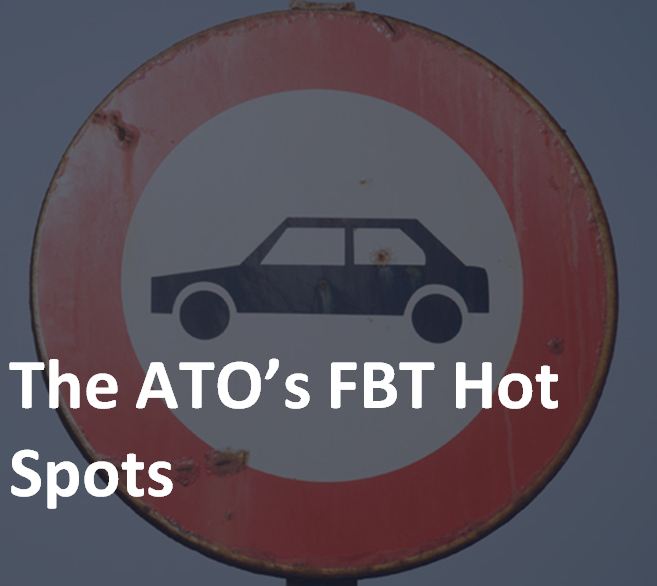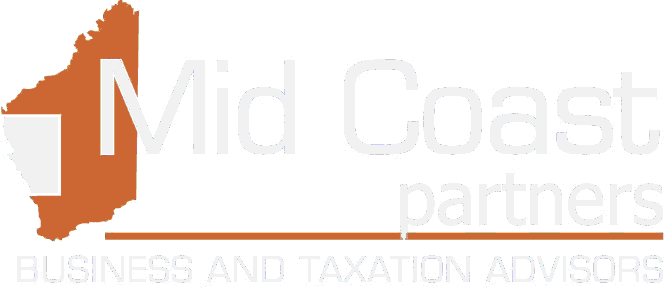Newsletter
The ATO’s FBT hotspots and what you need to look out for, did a Kardashian really just wipe US $1.3bn off the share price of Snapchat, the impending rules for GST on property development, and will your business be audited – a look at the small business benchmarks.
- The ATO’s FBT Hot Spots
– Motor vehicles – using the company car outside of work
– Utes and commercial vehicles – the new safe harbour to avoid FBT
– Car parking
– Living away from home allowances
– Salary sacrifice or employee contribution? - Power & Influence
– The other business influencer that could make or break you - GST on Property Developments
– The big changes for developers and purchasers
– For the purchaser
– For the developer (vendor) - Will Your Business be Audited?
– How the ATO identifies audit targets

The Fringe Benefits Tax (FBT) year ends on 31 March. We’ve outlined the key hot spots for employers and employees.
Motor Vehicles – using the company car outside of work
Just because your business buys a motor vehicle and it is used as a work vehicle, that alone does not mean that the car is exempt from FBT. If you use the car for private purposes – pick the kids up from school, do the shopping, use it freely on weekends, garage it at home, your spouse uses it – FBT is likely to apply. While we’re sure the old, “what the ATO doesn’t know won’t hurt them” mentality often applies when the FBT returns are completed, it might not be enough. The private use of work vehicles is firmly in the sites of the Australian Tax Office (ATO).
Private use is when you use a car provided by your employer (this includes directors) outside of simply travelling for work related purposes.
If the work vehicle is garaged at or near your home, even if only for security reasons, it is taken to be available for private use regardless of whether or not you have permission to use the car privately. Similarly, where the place of employment and residence are the same, the car is taken to be available for the private use of the employee.
Finding out that a car has been used for non work-related purposes is not that difficult. Often, the odometer readings don’t match the work schedule of the business. These are areas the ATO will be looking at.
Utes and commercial vehicles – the new safe harbour to avoid FBT
When an employer provides an employee with the use of a car or other vehicle then this would generally be treated as a car fringe benefit or residual fringe benefit and could potentially trigger an FBT liability.
However, the FBT Act contains some exemptions which can apply in situations where certain vehicles (utes and other commercial vehicles for example) are provided and the private use of the vehicles is limited to work-related travel, and other private use that is ‘minor, infrequent and irregular’.
One of the practical challenges when applying the exemption is how to determine if private use has been minor, infrequent and irregular. The ATO recently released a compliance guide that spells out what the regulator will look for when reviewing the use of the exemption.
The ATO has indicated that in general, private use by an employee will qualify for the exemption where:
- The employer provides an eligible vehicle to the employee to perform their work duties. An eligible vehicle is generally a vehicle for commercial purposes. The requirements are very strict and guidance on this is published on the ATO website.
- The employer takes reasonable steps to limit private use and they have measures in place to monitor this – this might be a policy on the private use of vehicles that is monitored using odometer readings to compare business kilometres and home to work kilometres travelled by the employee against the total kilometres travelled.
- The vehicle has no non-business accessories – for example a child safety seat.
- The value of the vehicle when it was acquired was less than the luxury car tax threshold ($75,526 for fuel efficient vehicles in 2017-18 and $65,094 for other vehicles).
- The vehicle is not provided as part of a salary sacrifice arrangement; and
- The employee uses the vehicle to travel between their home and their place of work and any diversion adds no more than two kilometres to the ordinary length of that trip, they travel no more than 750 km in total for each FBT year for multiple journeys taken for a wholly private purpose and, no single, return journey for a wholly private purpose exceeds 200 km.
If you meet all these specifications, the ATO has stated that it will not investigate the use of the FBT exemption further. However, the employer will still need to keep records to prove that the conditions above have been satisfied and to show that private use is restricted and monitored.
Car parking
We all know how expensive commercial car parks can be. The ATO has noticed that where car parking benefits are being declared (that is, where an employer provides parking to an employee), the value of what is being declared is significantly less than what you would expect to pay.
Common errors include:
- Market valuations that are significantly less than the fees charged for parking within a one kilometre radius of the premises on which the car is parked;
- Using parking rates or facilities not readily identifiable as a commercial parking station;
- Rates charged for monthly parking on properties purchased for future development that do not have any car parking infrastructure; and
- Insufficient evidence to support the rates used as the lowest fee charged for all day parking by a commercial parking station.
Living away from home allowances
Living Away From Home Allowances (LAFHA) continue to cause confusion for both employers and employees.
A LAFHA is an allowance paid to an employee by their employer to compensate for additional expenses they incur, and any disadvantages suffered because the employee’s job requires them to live away from their normal residence.
As a starting point, FBT applies to the full amount of the allowance that has been paid. However, if certain strict conditions can be satisfied the taxable value of the LAFHA fringe benefit can be reduced by the exempt accommodation and/or food component.
Common errors include:
- Mischaracterising an employee as living away from home when they are really just travelling in the course of their work.
- Failing to obtain the declarations required from employees who have been provided with a LAFHA.
- Claiming a reduction in the taxable value of the LAFHA benefit for exempt accommodation and food components in circumstances that don’t meet the criteria.
Failing to substantiate accommodation expenses and, where required, food or drink. Verifying accommodation expenses is important as the ATO will look closely for scenarios where employees are paid an allowance but go and stay with friends or relatives or stay somewhere cheaper and pocket the difference. The expense actually has to be incurred and substantiated.
Salary sacrifice or employee contribution?
One issue that frequently causes confusion is the difference between the employee salary sacrificing in order to receive a fringe benefit and making an employee contribution towards the value of that fringe benefit.
Salary sacrificing for a fringe benefit
To be an effective salary sacrifice arrangement (SSA), the agreement must be entered into before the employee becomes entitled to the income (e.g., before the period in which they start to perform the services that will result in the payment of salary etc.).
Where an employee has salary sacrificed on a pre-tax basis towards the fringe benefit provided – laptop, car, etc., they have agreed to give up a portion of their gross salary on a pre-tax basis and receive the relevant fringe benefit instead.
As a starting point, the taxable value of the fringe benefit is the full value of the expense paid by the employer.
The employer recognises a lower cost of salary and wages provided to the employee as their ‘cost saving’, which results in lower PAYG withholding and superannuation contribution obligations, but they still recognise the full value of the fringe benefit as part of their taxable fringe benefit which is subject to FBT.
The employee recognises that they have a reduced amount of salary and wages, and a non-cash benefit in the form of the fringe benefit.
What is an employee contribution?
An employee contribution is made from post-tax income and will often form part of arrangements relating to car fringe benefits. The employee recognises the gross salary and wages as income in their tax return. However, the payment of an after-tax employee contribution would generally have the effect of reducing the taxable value of the fringe benefit that was provided to them by the employer.
The employer would still be subject to the ‘standard’ PAYG withholding and superannuation contribution obligations in relation to the gross salary and wages amount.
The ATO is looking for discrepancies with contributions paid by an employee to ensure that these have been treated consistently for income tax and GST purposes as well as on the FBT return. This is really an issue for the employer and a discrepancy may mean that there is an FBT exposure or that the employer has paid less GST or income tax than what they should have.

Did a Kardashian really just wipe US $1.3bn off the share price of Snapchat?
A tweet from Kylie Jenner saying “sooo does anyone else not open Snapchat anymore? Or is it just me… ugh this is so sad” is being credited as the catalyst for an 8% drop in Snap* Inc’s share price.
While the price clawed back 2% that same day, and Jenner softened her commentary with another tweet saying, “still love you tho snap … my first love,” the effectiveness of Snapchat’s strategic direction had already been judged by its own social media jury.
The share price of Snap rose to a high of US$20.75 from AU$14.06 with the release of the update but had been buffeted by negative feedback. The share price had been gradually falling since 16 February. Jenner’s tweet made that decline a much sharper decent.
When an influencer has 24.5 million followers on Twitter, anything she says penetrates faster than mainstream media. Jenner’s Snapchat commentary attracted over 300,000 likes and over 64,000 comments. While it is ironic that a Kardashian dropped the share price of a product that has been her rocket to fame, it demonstrates the speed at which trend based businesses can rise and fall. Remember Pokemon? Nintendo went from its core user base to a world wide trend. After rising to massive heights in 2016 the use of Pokemon has declined rapidly. The lesson is to have a strategy to capitalise on the trend and sustain it for as long as possible, and never forget your core client base – your core still needs to be there when the trend is over.
It’s common for businesses to work through a list of external influencers and stakeholders to manage risk. Normally, the list considers Government regulation, environmental factors such as location, competitors, and changes in the marketplace but the cycle of impact of external influences has become much shorter. It’s unusual to have a celebrity in the mix but the positive impact of a celebrity adopting your brand is undeniable.
Jimmy Choo credits Princess Diana’s stylish influence as a catalyst for taking the brand from simply beautiful to desirable – a trend that has not significantly diminished. Kaftan designer Camilla became globally recognised after Oprah Winfrey wore her colourful designs. And, when Kate Middleton wears a Topshop outfit it sells out almost immediately.
The problem for businesses whose products become a trend is that trends go both ways – exponential growth and sharp decline. You are either in the spotlight or you’re not.
* Snapchat’s parent company

If a Bill currently before Parliament passes, from 1 July 2018, purchasers of new residential premises or new residential subdivisions will need to remit the GST on the purchase price directly to the ATO as part of the settlement process.
This is a significant change from how GST is currently managed with the developer collecting the full proceeds and remitting GST to the ATO in their next BAS (which can be up to three months after settlement). The reforms are aimed at preventing developers from dissolving the business before the next BAS lodgement to avoid remitting the GST.
For some developers there will be a significant cash flow impact because the purchaser will be required to pay 1/11th of the full sale price to the ATO, even if the developer’s GST liability on the sale would be less than this (e.g., where they can apply the GST margin scheme). In these cases, developers will need to seek a refund from the ATO.
The reforms apply to the sale or long-term lease of:
- new residential premises (other than those created through a substantial renovation and commercial residential premises); or
- subdivisions of potential residential land.
For the purchaser
If you are purchasing a new property affected by the changes after 1 July 2018, you will need to pay 1/11th of the full sale price directly to the ATO at settlement.
The vendor must supply you with a notification advising that the payment is required and the amount that is to be paid.
For the developer (vendor)
From 1 July 2018, the vendor will no longer collect and remit GST on the purchase price of the residential premises. Instead, the vendor must notify the purchaser in writing that the GST needs to be paid to the Commissioner and advise the amount that must be paid. The amount to be paid is simply 1/11th of the full sale price, regardless of whether the vendor is eligible to apply the margin scheme to reduce the GST liability associated with the transaction. In general, this notification will need to include:
- the name and ABN of the entity that made the supply;
- when the purchaser is required to pay that amount to the Commissioner (generally settlement date); and
- where some or all of the consideration is not expressed as an amount of money (e.g., sale of property for cash plus another property) – the GST-inclusive market value of the consideration that is not expressed as an amount of money.
Vendors that fail to provide this notification face fines of up to $21,000 per event.
The vendor will receive a credit for the amount that has been paid by the purchaser to the ATO (if the amount was simply withheld but not paid these amounts cannot be claimed). If the vendor’s net amount for the tax period is in a credit, a refund will be made.
It’s expected that the new rules will generally be incorporated into the settlement process but it is something that developers and purchasers will need to be across for any affected property with a settlement date of 1 July 2018 onwards.
If you are developing property and are concerned about the impact of the reforms, please contact us.

The ATO is very upfront when it comes to their compliance activity. Every year they publish small business benchmarks that outline what a typical business ‘looks like’ in different industries. If your business falls outside of those benchmarks, the ATO is likely to take a closer look at why that is.
Falling outside of the benchmarks might not indicate a tax related problem. It might mean that your business has a different business model to the norm or is performing poorly relative to others in the industry. If your business does fall outside of the benchmark however, it is important to ensure that the reasons why can be clearly articulated (preferably documented) and the reason for those differences is not tax evasion. If there is no proof as to why the business is outside of the benchmarks, the ATO is likely to simply apply the benchmark ratio and issue a revised tax assessment.
The ATO look at:
- cost of sales to turnover (excluding labour)
- total expenses to turnover
- rent to turnover
- labour to turnover
- motor vehicle expenses to turnover
- non-capital purchases to total sales, and
- GST-free sales to total sales.
For example, for a veterinary practice with a turnover between $300,001 and $800,00, the cost of sales to turnover ratio is expected to be between 25% and 29% (averaging at 27%), and average total expenses are 78%. The cost of labour to turnover ratio is between 21% and 29% and rent is between 5% and 8%.
The benchmarks are also a useful tool for anyone wanting to understand what is typical in their industry and how they perform against the average. It might also indicate opportunities for improvement and where the business is falling behind its competitors.
Quote of the month
“The only way to do great work is to love what you do. If you haven’t found it yet, keep looking. As with all matters of the heart, you’ll know when you find it.”
– Steve Jobs, co-founder of Apple Inc
General information disclaimer:
This article is for use of a general nature only and is not intended to be relied upon as, nor be substitute for, specific professional advice. No responsibility for loss occasioned to any persons or organisations acting on or refraining from action as a result of any information or material on our website will be accepted. Please ensure you contact us to discuss your particular circumstances and how the information provided applies to your situation.
